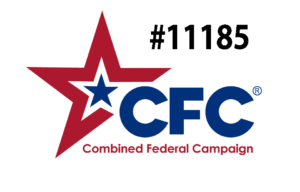What You Should Know About Divorce and Your Federal Benefits
by Joyce Warner
We recently sat down with James Marshall, Deputy Director of the National Active and Retired Federal Employees Association’s (NARFE) Federal Benefits Institute, to get some tips for federal employees going through a divorce and/or getting remarried after a divorce. Divorce is almost always a stressful and complicated matter and if you are a fed there are additional complexities to navigate. We thought others in our FEEA community would be interested in this topic and decided to share what we learned!
Joyce: James, thanks for joining us for this conversation. We hear a lot from feds trying to navigate their benefits during a divorce and are hoping you can share some of your knowledge on the most frequent questions we see. First, when does a federal employee’s former spouse stop being covered for medical, dental, vision, etc.
James: Hello Joyce, it’s my pleasure to assist as many federal employees and annuitants as possible, so I’m thankful that you have reached out to me. Divorce can be a stressful time for anyone, so I’m doing my best to help alleviate some of that stress by helping feds understand which federal benefits can be affected by a court order and what potential federal benefits are available for a former spouse.
A federal employee/annuitant’s former spouse cannot remain under the employee/annuitant’s medical, dental, or vision insurance once the divorce is finalized.
Assuming that the former spouse is not a fed, upon loss of coverage as a family member, the former spouse will have a 31-day extension of FEHB coverage & during this time the former spouse may convert to an individual contract or continue FEHB coverage under the Temporary Continuation of Coverage (TCC) provisions of the FEHB law (which only lasts for 36 months).
If the former spouse will be entitled to a portion of the fed’s annuity OR a survivor annuity, then the former spouse has 60 days from the date of the divorce to contact the employee’s agency or OPM (if an annuitant) in writing and request FEHB coverage under the Spouse Equity law (which could potentially provide access to FEHB for the remainder of the former spouse’s life).
Unfortunately, there are no provisions that currently allow the former spouse to maintain any level of coverage under the Federal Employees Dental & Vision Insurance Program (FEDVIP). The former spouse’s FEDVIP coverage terminates effective the date of the divorce.
If a spouse has long term care insurance under the Federal Long Term Care Insurance Program (FLTCIP) before the effective date of the divorce, they will be allowed to maintain coverage under the FLTCIP when they become a former spouse. However, if the former spouse didn’t obtain coverage under the FLTCIP before the divorce became effective, the former spouse is not eligible to apply for FLTCIP later.
Joyce: What about life insurance? I know we’ve seen a few cases in FEEA’s history where a federal employee passed away and they had never updated their life insurance forms and their former spouse was still listed as the beneficiary. What steps should the federal employee take during a divorce and/or remarriage?
James: There are 4 beneficiary forms that every fed should be aware of – regardless of family status – but especially important when going through a divorce.
Each form explains the federal order of precedence for various lump sum payments of federal benefits, and each form includes instructions on how to designate new beneficiaries or cancel the prior designations, if desired.
These forms include:
- SF2808 (Designation of Beneficiary for CSRS) – if currently CSRS or CSRS Offset
- SF3102 (Designation of Beneficiary for FERS) – if currently FERS, including CSRS employees who elected to transfer to FERS
- SF2823 (Designation of Beneficiary for FEGLI)
- TSP3 (Designation of Beneficiary for TSP)
- SF1152 (Designation of Beneficiary for Unpaid Compensation) – Employees Only
From my experience, the most common beneficiary form that is neglected when an employee goes through a divorce is the SF1152. This form is maintained by the agency in the employee’s official personnel folder (OPF). This form tells the agency payroll office who will receive the employee’s last paycheck and lump sum payment for any unused annual leave if the employee dies before he/she has a chance to receive this money upon separation from federal service.
Of course, once you separate and receive your final salary and lump sum payment for unused annual leave, don’t worry about updating the SF1152 ever again unless you return to federal service again.
It takes less than 20 minutes to update any of these forms. Once received by the appropriate authority, new forms always supersede or cancel the old forms. I always recommend that the fed obtain copies of the beneficiary forms once they have been certified by the receiving authority, just in case the new form is lost or misplaced. Otherwise, an agency might use an old form if no one produces a newer form upon the death of the fed. I can’t tell you how many times that I have processed someone’s retirement or a death-in-service case to find beneficiary forms in someone’s OPF that belongs to someone else. A photo-copy of the most recently certified form, filed among your other important documents, will ensure that the people you care about get paid when you pass away.
Joyce: Most of the individuals FEEA works with are on the Federal Employee Retirement (FERS) System. Do future FERS benefits have to be divided a certain way when finalizing a divorce?
James: There is a lot of flexibility that feds have when negotiating or discussing the division of their federal benefits. It is recommended that the fed communicate with his/her spouse using both the RI 84-1 (Court Ordered Benefits for Former Spouses) and the TSPBK11 (Court Orders and Powers of Attorney for TSP) as guidelines for various options, and have their attorneys become acquainted with these publications as well as the RI 83-116 (OPM’s Handbook for Attorneys on Court Ordered Retirement, Health Benefits and Life Insurance).
Joyce: What about Thrift Savings Plan (TSP) accounts? What are some of the key points Feds should keep in mind here where finalizing their divorce?
James: As mentioned in my previous answer, I first recommend that the fed and his/her spouse review the TSPBK11 to aid their discussion on how they might divide the TSP account, if desired. When a fed goes through a legal separation or a divorce, there are often other “non-federal assets” involved (i.e. houses, vehicles, other retirement savings accounts, etc.), so it’s really up to the fed and his/her spouse to determine the fairness of dividing the TSP account, if desired. If the fed and his/her spouse can’t come to an agreement, then that’s where their attorneys get involved.
Some feds will go through a long legal separation process before deciding to finally divorce. It’s interesting to note that the fed can still keep the separated spouse under his/her FEHB & FEDVIP plans as a spouse (if desired) and the TSP account can be divided while legally separated, although the divorce hasn’t yet become final.
Joyce: What about when a fed remarries? Are they eligible to cover their new spouse on their benefits? Are there any common pitfalls to avoid?
James: A divorced fed (whether employed or retired) who remarries can add their new spouse to his/her FEHB and/or FEDVIP plan effective the date of marriage as a qualified life event OR during any future open season.
If the fed is an employee (with at least 18 months of federal service under FERS or 5+ years of federal service under CSRS), the surviving spouse is potentially eligible for a spousal survivor benefit if the employee:
- dies after 9 months of marriage, or
- dies within 9 months of marriage and the employee’s death is deemed an accident, or
- dies within 9 months of marriage and the widow/widower had a child with the employee (even if the child was born out of wedlock)
If the fed is an annuitant, the new spouse won’t qualify for a spousal survivor benefit if the annuitant dies within 9 months of marriage, regardless of whether the annuitant’s death is deemed an accident or that the surviving spouse had a child with the fed. However, as long as the marriage lasts 9 months AND as long as the annuitant contacts OPM (in writing) and elects a spousal survivor benefit within 2 years from the date of marriage, the surviving spouse would potentially qualify for the spousal survivor benefit elected by the fed.
Two things must be in place at the time of the fed’s death to ensure that a surviving spouse will be allowed to maintain access to FEHB (at the same rates that full time employees and annuitants pay AND with the same open seasons and qualified life events to change plans indefinitely into the future):
- the surviving spouse must be under the fed’s FEHB plan on the date of the fed’s death, AND
- a minimum spousal survivor benefit must be potentially payable.
I underlined the word “potentially” several times because even if a former spouse is entitled to the maximum spousal survivor benefit based on a court order that was previously filed with OPM, which leaves nothing to be paid to the current spouse if both former and current spouse outlives the fed, since the current spouse is still potentially eligible for the spousal survivor benefit (previously elected by the fed) if the former spouse dies first, then this provision in the law allows the current widow/widower to maintain access to FEHB at a less expensive cost than the divorced former spouse.
So if your future spouse is not a fed, my suggestion would be to add your future spouse to your FEHB plan as soon as possible and elect at least a minimum spousal survivor benefit when applicable, either with your retirement application if federally employed OR in writing with OPM within 2 years from the date of marriage if previously retired from federal service.
Joyce: Wow! After this conversation, if I were a federal employee getting a divorce, I would definitely quiz the attorneys I was considering to make sure they were familiar with federal benefits and divorce before I picked one. Given how complex this topic is and since we hear many attorneys are not well versed on the ins and outs of federal benefits, are there any resources you suggest feds read themselves and also share with their attorneys?
James: I mentioned 3 previous resources for guidance which include:
- the RI 84-1 (Court Ordered Benefits for Former Spouses)
- the TSPBK11 (Court Orders and Powers of Attorney for TSP), and
- the RI 83-116 (OPM’s Handbook for Attorneys on Court Ordered Retirement, Health Benefits and Life Insurance)
Feds and their attorneys may also reach out to OPM’s COBB (Court Ordered Benefits Branch) for assistance at 202-606-0222. If they want to speak with someone at OPM, it’s best to call early in the morning and be prepared for long hold times.
But in my opinion, the best advice I could give any fed who is dealing with any divorce issues that affect federal benefits would be to contact Dan Jamison through his online service guide at www.fersguide.com.
I also recommend that feds view the webinar that Dan and I recently conducted for NARFE’s Federal Benefits Institute on this topic. That webinar covered a lot of material and will give feds a taste of why it’s so important to discuss this complex issue with someone who specializes in such a topic. This webinar, like all NARFE Federal Benefits Institute broadcasts, is archived and available for free to NARFE members. To join NARFE, please visit us at narfe.org.
Would you like to receive more information like this when it comes out? Sign up for the FEEA newsletter using the box in the lower right hand corner of this page.
Would you like to reprint this piece in your agency human resource, federal employee association, or union local newsletter? You can do so at no cost by contacting admin@feea.org with your request.
The information provided in this piece is for your convenience and informational purposes only and not to be construed as professional advice. FEEA and its coauthors and sponsors are not liable for any losses or damages related to actions or failure to act with regard to the content in this piece.




